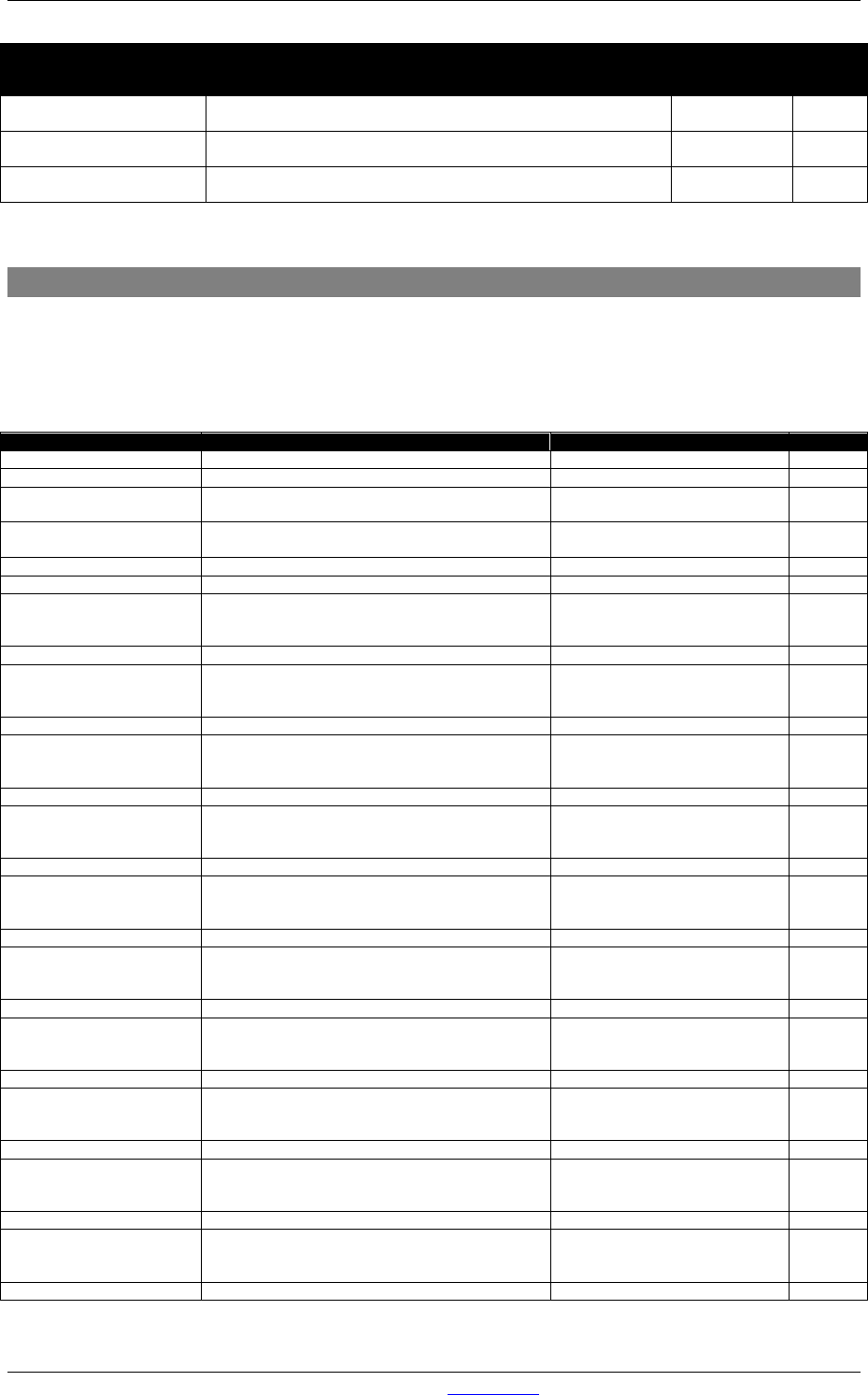User manual
Table Of Contents
- 1 Table of contents1 T
- 2 Package Contents
- 3 Introduction
- 4 System overview
- 5 Control Surfaces
- 6 AXUM Engine
- 6.1 Console 1-4 configuration
- 6.1.1 IP/Clock configuration
- 6.1.2 Global configuration
- 6.1.3 Mix buss configuration
- 6.1.4 Monitor buss configuration
- 6.1.5 Source configuration
- 6.1.6 Extern source configuration
- 6.1.7 Destination configuration
- 6.1.8 Talkback configuration
- 6.1.9 Processing presets
- 6.1.10 Module assignment
- 6.1.11 Module configuration
- 6.1.11.1 Module configuration page
- 6.1.11.2 Module preset 1A/1B, 2A/2B, 3A/3B, 4A/4B
- 6.1.11.3 Processing
- These are the programmed processing defaults for the modules. Depending on the startup settings these processing defaults will be used at startup (programmed defaults in global configuration).The field ‘Use at source select’ determines if the default module processing in the source configuration is used when a source is assigned via the module source select functionality and no processing preset is assigned in the ‘source configuration’.
- The following state/value processing sections are available:
- 6.1.11.4 Routing
- 6.1.11.5 Set module 1 to programmed startup state
- 6.1.12 Mix/monitor buss presets
- 6.1.13 Console presets
- 6.1.14 Surface configuration
- 6.1.15 Rack configuration
- 6.1.16 Source pools
- 6.1.17 Preset pools
- 6.1.18 Users
- 6.2 System configuration
- 6.1 Console 1-4 configuration
- 7 Surface(s) website
- 8 Block diagrams – Must be created
- 9 I/O Rack description
- 10 Available I/O rack cards
- 11 Patch panels
- 12 Specifications AXUM digital audio system
- 13 List Of Figures
- 14 List Of Tables
- 15 Declaration Of Conformity
- 16 Product Safety
- 17 Disclaimer
- 18 Appendix A - Network design for AXUM
- 19 Appendix B – Surface service
- 20 Appendix C – Engine functions

A·X·U·M User Manual Version 2.5 - 2011-01-28
AXUM from D&R - Phone: +31 294 418014 - E-Mail: info@d-r.nl - 120 -
Name
comments
Example
object to
connect to
Version
Select 2
When source select for console 2 is activated the source will be
selected
future use
2.3
Select 3
When source select for console 3 is activated the source will be
selected
future use
2.3
Select 4
When source select for console 4 is activated the source will be
selected
future use
2.3
20.7 Destinations
Some objects have functionality that relates to the destination selected on a send module. For
example if you have a GPI that should trigger a TB or MUTE send module function.
This group with destination functions makes it possible to have destination related send module
functionality:
Name
Comments
Example object to connect to
Version
Label
Shows the name of the current destination
Display
2.0
Source
Selects the source for this destination
Encoder/Display
2.0
Monitor speaker level If the source is a monitor buss and the speaker
level is changed this destination will follow
I/O card level 2.0
Monitor phones level If the source is a monitor buss and the phones
level is changed this destination will follow
I/O card level 2.0
Level
This adjust the level of this destination
Encoder
2.0
Mute
Mutes this destination
Switch, I/O card mutes
2.0
Mute & Monitor mute
Mutes this destination if the source is a monitor
buss and the monitor buss mute is activated or its
local mute is set.
I/O card mutes
2.0
Dim
Dims this destination
Switch, I/O card dim
2.0
Dim & Monitor dim Dims this destination if the source is a monitor
buss and the monitor buss dim is activated or its
local dim is set.
I/O card dim 2.0
Mono
Make this destination mono
Switch, I/O card mono
2.0
Mono & Monitor mono Make this destination mono if the source is a
monitor buss and the monitor buss mono is
activated or its local mono is set.
I/O card mono 2.0
Phase Changes phase for this destination Switch, I/O card phase 2.0
Phase & Monitor phase
Changes phase for this destination if the source
is a monitor buss and the monitor buss phase is
activated or its local phase is set.
I/O card phase
2.0
Talkback 1
Do talkback to this destination
Switch, I/O card talkback 1
2.0
Talkback 1 & Monitor
talkback 1
Do talkback to this destination if the source is a
monitor buss and the monitor buss talkback is
activated or its local talkback is set.
I/O card talkback 1
2.0
Talkback 2
Do talkback to this destination
Switch, I/O card talkback 2
2.0
Talkback 2 & Monitor
talkback 2
Do talkback to this destination if the source is a
monitor buss and the monitor buss talkback is
activated or its local talkback is set.
I/O card talkback 2
2.0
Talkback 3
Do talkback to this destination
Switch, I/O card talkback 3
2.0
Talkback 3 & Monitor
talkback 3
Do talkback to this destination if the source is a
monitor buss and the monitor buss talkback is
activated or its local talkback is set.
I/O card talkback 3 2.0
Talkback 4
Do talkback to this destination
Switch, I/O card talkback 4
2.0
Talkback 4 & Monitor
talkback 4
Do talkback to this destination if the source is a
monitor buss and the monitor buss talkback is
activated or its local talkback is set.
I/O card talkback 4
2.0
Talkback 5 Do talkback to this destination Switch, I/O card talkback 5 2.0
Talkback 5 & Monitor
talkback 5
Do talkback to this destination if the source is a
monitor buss and the monitor buss talkback is
activated or its local talkback is set.
I/O card talkback 5
2.0
Talkback 6
Do talkback to this destination
Switch, I/O card talkback 6
2.0
Talkback 6 & Monitor
talkback 6
Do talkback to this destination if the source is a
monitor buss and the monitor buss talkback is
activated or its local talkback is set.
I/O card talkback 6
2.0
Talkback 7
Do talkback to this destination
Switch, I/O card talkback 7
2.0










